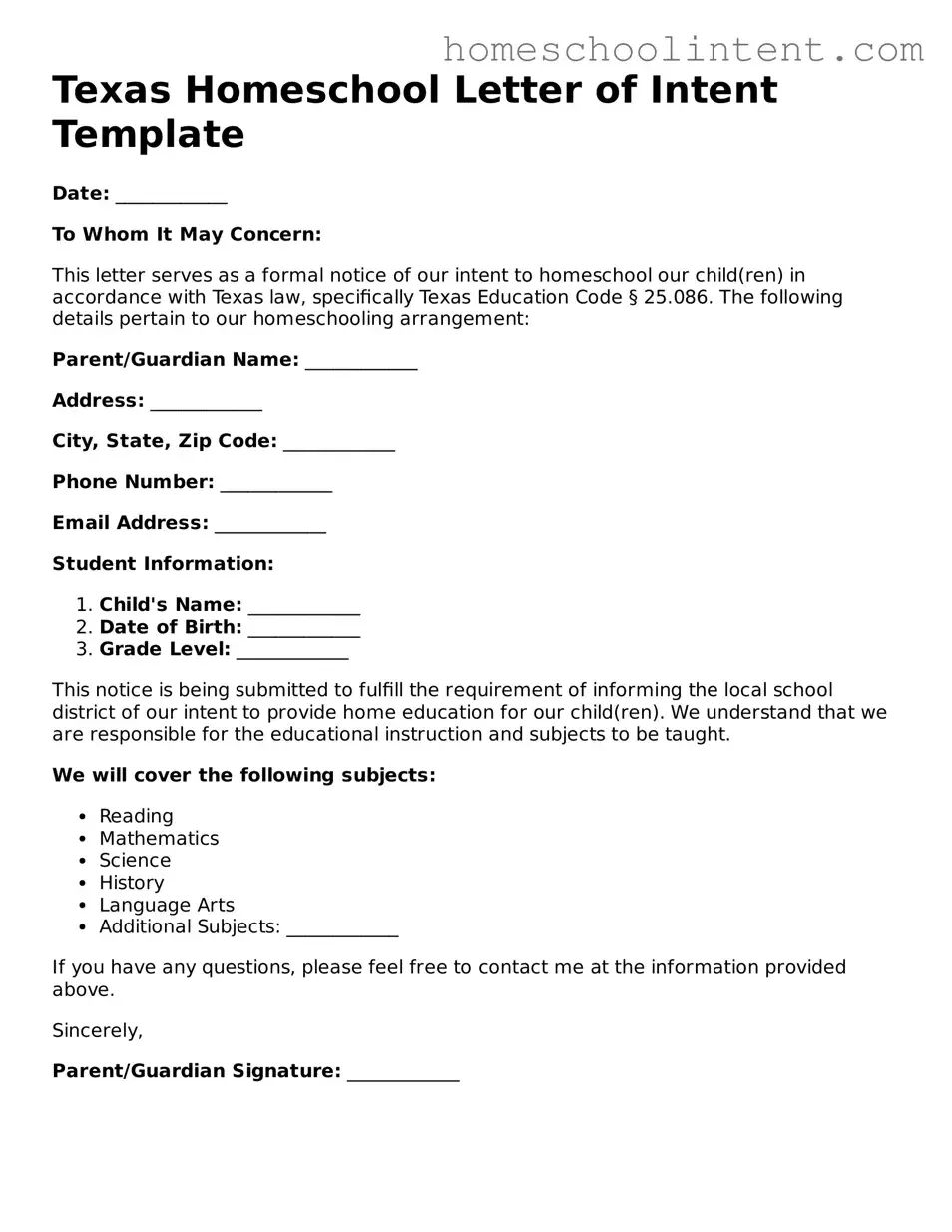Documents used along the form
When you decide to homeschool in Texas, several forms and documents may accompany your Letter of Intent. These documents help ensure compliance with state regulations and provide necessary information to support your homeschooling journey. Below is a list of commonly used documents.
- Attendance Records: Keeping detailed records of your child's attendance is essential. This document helps track the days your child engages in educational activities, ensuring compliance with state requirements.
- Curriculum Plan: A curriculum plan outlines the subjects and materials you intend to use throughout the school year. This document can serve as a guide for both you and your child, helping to structure the learning experience.
- Portfolio of Student Work: A portfolio showcases your child's progress and achievements. It can include samples of completed assignments, projects, and assessments, providing a comprehensive view of their educational journey.
- Standardized Test Results: While not mandatory, standardized testing can be beneficial. Keeping records of test results can help assess your child's academic progress and may be required for certain evaluations.
- Notification of Withdrawal: If your child previously attended a public or private school, you may need to submit a notification of withdrawal. This document informs the school of your decision to homeschool and helps avoid any misunderstandings.
- Educational Philosophy Statement: This statement outlines your beliefs and approaches to education. It provides insight into your teaching methods and can be useful for your own reflection as well as for any evaluations.
These documents play a crucial role in your homeschooling process. By keeping them organized and up-to-date, you can focus on providing a quality education for your child while meeting legal requirements.
